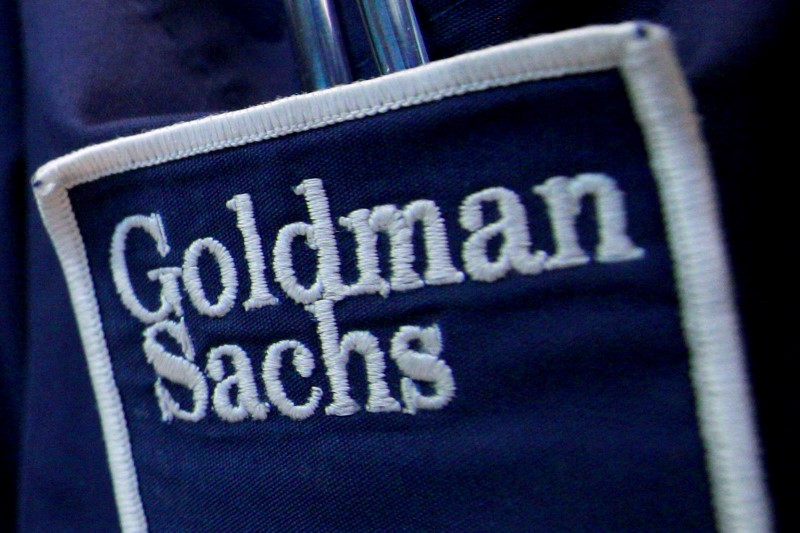Gold prices fall from record highs on Gaza ceasefire, but retain $4,000/oz level
Investing.com -- Goldman Sachs has revised its 12-month forecast for Europe’s STOXX 600, lowering its expectations for equity price returns and earnings growth.
The downgrade comes as the firm factors in the likelihood of higher tariffs, weaker economic growth in both the US and Europe, and potential disruptions to global trade.
Goldman Sachs analysts have revised their STOXX Europe index forecasts downwards.
They now anticipate price returns of -6% (3 months), -2% (6 months), and 5% (12 months), a decrease from their prior targets of 560, 570, and 580 for the same periods, which are now 510, 530, and 570.
Earnings growth expectations have also been adjusted downward. Goldman Sachs now estimates European earnings per share to grow 2% in 2025 and 4% in 2026, a reduction from prior forecasts of 4% and 6%.
This puts the outlook below consensus estimates, which stand at 6% and 11%, respectively.
The revision follows a broader trend of declining earnings expectations, as consensus EPS growth for 2025 has already been trimmed from 8% earlier in the year.
The adjustments come in response to the firm’s economists raising their projections for US tariffs.
They now expect the US to implement a 15% reciprocal tariff across all trading partners, up from their previous assumption of a 10% increase.
The European Union, which accounts for roughly 15% of US imports, would be directly affected, with key sectors such as machinery, pharmaceuticals, and chemicals likely to feel the pressure.
As a result of these tariff assumptions, Goldman Sachs has revised its US GDP growth forecast for the fourth quarter of 2025 down to 1% from 1.5%.
Economic growth in the Euro Area is also expected to take a hit, with a projected reduction of 0.25 percentage points.
Given that European corporate earnings are closely tied to economic activity, these GDP adjustments translate into lower profit expectations for European companies.
While the overall outlook has been cut, Goldman Sachs sees some mitigating factors.
Lower interest rates, potential exclusions from tariffs, and increased fiscal and defensive spending in Europe could provide some relief.
The brokerage also points out that European stocks are already trading at a discount compared to US equities, which may cushion some of the downside risks.
Long-term positioning in Europe remains relatively low, further limiting the potential for sharp market corrections.
The brokerage flags that cyclical sectors and indices such as the DAX, MDAX, and Nordic markets are the most exposed to trade uncertainty. Defensive sectors, along with the FTSE 100 and Swiss Market Index (SMI), are expected to be more insulated.
The analysts also note that while European companies with US exposure have benefited from strong American economic growth and a stronger dollar in recent years, any impact on US growth or currency movements could challenge their resilience.
Goldman Sachs has identified two key stock baskets to track the effects of US trade policy: the ‘USA Tariffs’ basket, which includes European firms with high US sales but limited domestic production, and the ‘Made in USA’ basket, which consists of companies with both high US sales and a substantial manufacturing presence in the country.
These baskets tend to move in line with shifts in European trade policy uncertainty.
Despite the lowered outlook, Goldman Sachs points out that European equities remain at a valuation discount to US stocks.
While capital flows into Europe have increased recently, they remain historically low. Additionally, exposure to China—an important market for European businesses—has been rising, which could provide some offsets to the broader macroeconomic challenges.
The revision to the European forecast is smaller compared to the cut Goldman Sachs made to its US outlook, where the S&P 500’s 12-month target was reduced by 10 percentage points.
The key difference, according to the brokerage, is that European valuations are already at lower levels, leading them to expect a stable forward price-to-earnings ratio of around 14 times in the next 12 months.
Goldman Sachs cautions that the future performance of markets heavily hinges on the direction of US tariff policies, specifically whether there will be any exemptions or modifications.
The length of time these tariffs remain in place will also be a determinant of their economic impact.
Additionally, the increased probability of a US recession within the next year (now at 35%, up from 20%) poses a risk to European markets, considering the historical tendency for stock market downturns to align across both regions.
